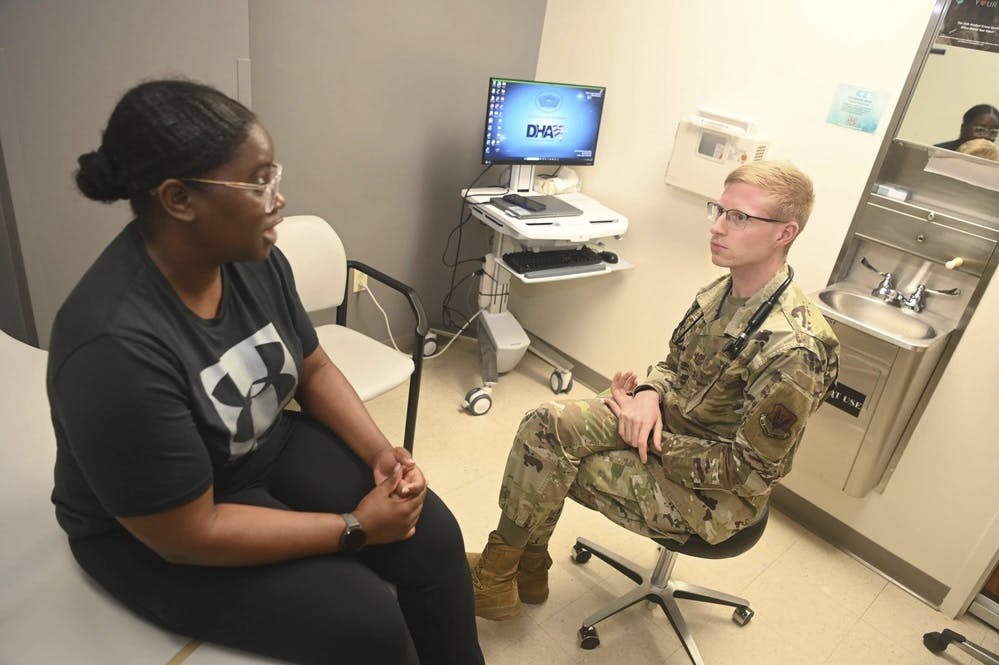Cloud, Data Visibility Crucial to COVID-19 Medical Supply Chain
A task force leveraged FEMA’s cloud to centralize medical stockpile data and inform the nation’s supply chain adjustment during the pandemic.

During the initial wave of the COVID-19 pandemic in March, the U.S. was heavily reliant on providers in Asia for things like personal protective equipment as it had little to no manufacturing capability for these items. In response, the federal government enabled the collective use of IT resources and data to enable a robust medical supply chain across the nation.
The Department of Health and Human Services’ Supply Chain Task Force has led the effort to understand medical stockpile shortages across the nation. By leveraging the Defense Production Act in coordination with the Defense Department, the task force helped pivot national manufacturing efforts in response to supply chain needs, noted the task force’s lead, Rear Adm. John Polowczyk at an industry event last week.
The task force took on a four-part approach to rapidly respond to the supply chain crisis: preservation, acceleration, expansion and distribution. The first three parts directly lead to the element of distribution — ensuring that medical responders have the resources they need to remain safe and responsive to the pandemic.
The preservation piece came earlier in the pandemic, when there was high demand for equipment like N95 masks, disinfectants and other critical supplies to the pandemic response. The task force pushed a preservation of materials mindset by forming procedures to sterilize personal protective equipment and create hospital wards exclusively for COVID-19 patients. This removed the need for health employees to wear the equipment needed to treat patients with the virus when the equipment was scarce.
The task force also pushed the acceleration of identifying and procuring foreign and domestic supplies, speeding up delivery via air lift, rather than through ground- or sea-based transport, which can take upward of 30 days between procurement and distribution.
Leveraging the Defense Production Act fell within the expansion piece of the plan to enhance or repurpose current and new domestic manufacturing capabilities.
Within this four-pronged approach, IT has been critical, Polowczyk said. The task force learned what supplies are needed and worked with industry to meet demand through its Supply Chain Control Tower, which has leveraged the Federal Emergency Management Agency’s cloud to gather and centralize nationwide medical supply chain data.
“We went to the six largest medical distributors and group-purchasing organizations and got them to share their supply chain information, their business system data, with us,” Polowczyk said. “We took six different businesses and dumped their daily transactional business information into the cloud at FEMA.”
After setting up data collection with manufacturers, as well as about 6,000 hospitals and 15,400 long-term care facilities, the task force gained greater visibility into the supply and demand across the medical industrial base. This led to the coordination of a more effective supply chain response to inventory needs across health care and other critical industries.
“By mid-April, I had the ability to understand supply chain things like fill rates, how well the system was working to meet needs. I could aggregate demand. I could aggregate orders from customers, which we did, which we used to make our first estimates of national demand, … not just hospital demand, [but also] first responder demand for other industries,” Polowczyk said.
The task force provided aggregate demand out of its supply chain IT control tower to acquisition professionals at DOD, who then leveraged the Defense Production Act to expand U.S. domestic production accordingly.
The U.S. has been able to scale up manufacturing because of this private-public coordination and data-driven effort. The nation is on track to produce the following amounts of medical supplies per month for the Strategic National Stockpile by December, compared to March:
- 300 million N95 respirators from 17.9 million
- 400 million surgical masks from about 30.5 million
- 265 million gowns from 4.75 million
- 4.5 billion nitrile gloves from 33.82 million
- 153,000 ventilators from about 19,000.
Currently, Polowczyk said 83% of U.S. states and territories have a more than 30-day supply of critical medical materials.
Polowczyk emphasized the cloud in the task force’s current successes. By working with disparate datasets from disparate business systems in the cloud first at FEMA and then HHS, the task force was able to apply supply chain tools in the Supply Chain Control Tower to make sense of the data.
“I couldn’t have gotten this visibility if the federal government didn’t have a cloud architecture,” Polowczyk said.
Polowczyk underscored the need to continue making data standardized, usable and digestible, not just for the medical supply chain, but also for various industries and agencies to enable future rapid response to other emergencies — such as with the food supply chain.
“This is about taking the datasets that you have available, bringing them into one environment and being able to put the right tools on top of it and make informed decisions,” Polowczyk said. “I think what we did here has applicability across many federal agencies that are not managing an industrial base today, but might have to in the future.”
This is a carousel with manually rotating slides. Use Next and Previous buttons to navigate or jump to a slide with the slide dots
-

NIST to Release New AI Cybersecurity Guidance as Federal Use Expands
NIST plans to release AI cybersecurity guidance within the year to support safe adoption as federal agencies expand use cases.
4m read -

CIA Adds Fourth Pillar to AI Strategy, CAIO Says
Lakshmi Raman says the new pillar marks a strategic shift toward embedding AI more deeply into the CIA’s day-to-day mission execution.
3m read -

FEHRM CTO Targets Two-Year Cloud Migration for Federal EHR
Lance Scott touts new EHR tech advancements, including cloud migration, expanded data exchange and AI integration to improve care delivery.
4m read -

AI Enables Coast Guard’s Workforce to Transform Operations
The Coast Guard’s Deputy CIO Brian Campo delves into the ways AI is pushing the service to rethink its core services, workforce and operations.
14m watch








